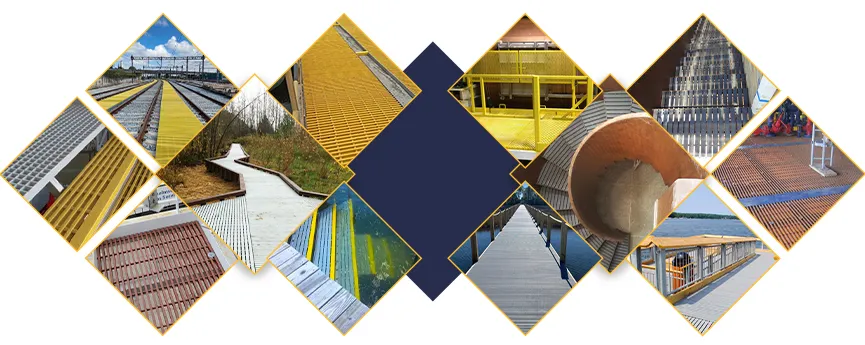loading...
- No. 9, Xingyuan South Street, Dongwaihuan Road, Zaoqiang County, Hengshui, Hebei, China
- admin@zjcomposites.com
- +86 15097380338
- Welcome to visit our website!
fibreglass grating
The Versatility and Benefits of Fiberglass Grating
Fiberglass grating is an innovative material that has revolutionized various industries due to its unique properties and versatility. Made from reinforced fiberglass resin, this type of grating offers a lightweight yet durable solution for a wide range of applications. Its resistance to corrosion, low maintenance requirements, and slip-resistant surface make it an ideal choice for environments where traditional materials might fail.
One of the most significant benefits of fiberglass grating is its resistance to chemical corrosion. Unlike steel or wood, which can deteriorate when exposed to harsh chemicals, fiberglass grating maintains its integrity even in the presence of acidic or alkaline substances. This makes it particularly beneficial in industries such as chemical processing, wastewater treatment, and pharmaceuticals, where various chemicals are frequently handled. The longevity of fiberglass grating not only reduces replacement costs but also minimizes downtime, leading to increased operational efficiency.
The Versatility and Benefits of Fiberglass Grating
Safety is a paramount concern in any industrial environment, and fiberglass grating excels in this area as well. It typically features a slip-resistant surface, which is crucial in areas prone to spills or where water may accumulate. This slip resistance helps prevent accidents, ensuring a safer working environment for employees. Additionally, fiberglass grating does not conduct electricity, making it a preferred choice in places where electrical hazards are a concern, such as in power plants and industrial facilities.
fibreglass grating

The versatility of fiberglass grating allows it to be used in a variety of applications across different industries. It is commonly employed in walkways, platforms, stair treads, and drainage covers. The customizable nature of fiberglass grating means that it can be manufactured in various shapes and sizes to meet specific project requirements. Whether it’s for a large-scale industrial facility or a small pedestrian walkway, fiberglass grating can be tailored to fit the needs of the application.
From an aesthetic standpoint, fiberglass grating is available in a range of colors and finishes. This allows for the integration of industrial sites into their surroundings or compliance with safety regulations that require color-coded pathways or structures. The visual appeal combined with functionality makes fiberglass grating a popular choice in not only industrial settings but also in architectural designs and public spaces.
In terms of environmental considerations, fiberglass grating contributes positively to sustainability efforts. Its durability reduces the need for frequent replacements, leading to less waste in landfills. Furthermore, modern manufacturing processes often incorporate recycled materials, further enhancing the eco-friendliness of fiberglass products.
In conclusion, fiberglass grating presents numerous advantages that make it a superior alternative to traditional materials in many applications. Its resistance to chemicals, lightweight nature, safety features, versatility, aesthetic appeal, and environmental benefits position it as a leading choice across industries. Whether for industrial use, construction, or architectural design, fiberglass grating continues to gain popularity, proving that innovation in materials can lead to safer, more efficient, and sustainable solutions in our ever-evolving world. As industries continue to seek out reliable and robust solutions, fiberglass grating will undoubtedly remain at the forefront of material technology.
-
The Rise of FRP Profiles: Strong, Lightweight, and Built to LastNewsJul.14,2025
-
SMC Panel Tanks: A Modern Water Storage Solution for All EnvironmentsNewsJul.14,2025
-
GRP Grating: A Modern Solution for Safe and Durable Access SystemsNewsJul.14,2025
-
Galvanized Steel Water Tanks: Durable, Reliable, and Ready for UseNewsJul.14,2025
-
FRP Mini Mesh Grating: The Safer, Smarter Flooring SolutionNewsJul.14,2025
-
Exploring FRP Vessels: Durable Solutions for Modern Fluid HandlingNewsJul.14,2025
-
GRP Structures: The Future of Lightweight, High-Performance EngineeringNewsJun.20,2025
